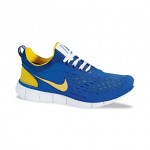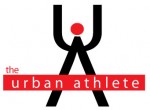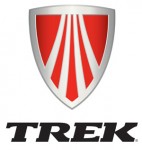Audience: Therapists and Runners
 Purpose: quick review of a research abstract of a paper investigating the influence of running in the Nike Free on foot muscle strength and size.
Purpose: quick review of a research abstract of a paper investigating the influence of running in the Nike Free on foot muscle strength and size.
A research abstract (not a full paper) was published at the American Society for Biomechanics conference in 2010 by Dr. GP Brunnemann and colleagues.
“Effect of increased mechanical stimuli on foot muscles functional capacity”
The Study Overview
The authors had two groups of athletes. One group ran in the Nike Free during their warm up sessions over the course of five months while the other group did not (they wore their usual trainers). Too bad the “control” group did not go barefoot or wear flats. That would have been interesting as well.
The authors measured foot strength during plantar flexion, toe flexion, supination strength (e.g. the ability to resist pronation) and also measured the size of some of the muscles that influence the foot (plantar flexors, tibialis anterior, flexor hallucis longus, flexor digitorum longus, tibialis posterior and peroneals).
What they found
Strength changes…
An increase in strength of plantar flexion, supination, flexion of the metatarsal phalangeal joints (toes) ONLY FOR THE GROUP WHO WORE THE NIKE FREEs.
Muscle changes…
Not all muscles got bigger. Only the flexor hallucis longus (the muscle going to the big toe) and the flexor digitorum longus (the muscle going to all of the toes) got bigger. They got bigger by about 4%. Additionally, two other tiny muscles in the sole of the foot (the quadratus plantae and abductor hallucis) enlarged by 5%.
What muscles did not change in size?
tibialis anterior, plantar flexors (gastroc and soleus), tibialis posterior, peroneals, abductor digiti minimi, flexor digitorum brevis
Interesting findings…what does it mean?
Nike suggests that these results support the idea that these shoes mimic running in barefoot (www.wiggle.co.uk/documents/Nike_Brochure_V4.pdf).
However, I don’t think we can conclude that, since this was not measured (the researchers don’t conclude this). For all we know, running in these shoes may stress the muscles completely differently than running barefoot and barefoot running may result in more robust results. Remember, not all muscles got bigger and not all movements got stronger. Regardless, this study supports the idea that the Free can be used as a training adaptation shoe. Strength increases were seen, as were size increases in small muscles of the foot. This occurred with a very small amount of training (merely warming up). In practice, we may want to suggest that our athletes do their cross training and strength training in this type of minimalist shoe (or have them go straight to barefoot). Or do what I do and wear them to work (I wear the now defunct LunarRacer).
My philosophy is that every athlete (and everyone is an athlete) should train all aspects of their body. The body responds to stress so we must find novel ways to stress our system. Provided that shoes like these are introduced slowly and follow a paced progression then incorporating this type of training into your usual day may provide some benefit.
Adios,
Greg



